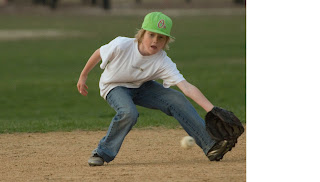The term "workflow" can apply to many jobs. Here we apply it to editing a photograph, also known as post processing. If you're not familial with the term, "post" means after, so post processing means what is done to the image "after" shooting. I doesn't matter much which editor you use, as all of them must do the basic chores. Photoshop and several other top professional photo editors allow you to do more than the basic editors, but almost every editing function to improve your image and get it ready for online display or printing can be done with almost any editor. Many of the editors are free and most cameras come with one to get you started. If you want to purchase one they start in the $20 range and run to $650 for the regular Photoshop.
Workflow addresses what you do first and what you do next. Not every photographer uses the same workflow. The one we cover here will work and most of the steps explain why this particular order was chosen.
Step 1: Save a Copy
This step may not be necessary for all editors since some automatically create a copy of the photo for editing purposes so that you can always start over if things go horribly wrong. Things going horribly wrong is not uncommon so do make sure that either you or your editor make a copy and work on that.
Step 2: Rotate the Image if Necessary.
Some folks never think of rotating their camera. Most photographers, however, will turn the camera sideways for portraits and for other shots that benefit from a vertical composition. Some cameras will also detect the rotation and editing software will automatically rotate it. One way or the other if you see your photo laying sideways now is the time to rotate it.
Step 3: Crop
This is the first part of the workflow that is considered "editing". Using the Crop Tool select the portion of the image you want to keep. Many pros crop in the camera by zooming in or moving closer so it is not necessary to crop in post processing and none of the pixels are thrown away, which is what cropping does. Be careful here. You want to get rid of areas that detract from the image. You can also change the shape of the final product. If you want to make a specific size print such as 5x7, 8x10 or 11x14 set your cropping tool to create the correct shape. You can also create a square shape and many labs will print square prints for you. Decide the shape and crop to that shape leaving the most interesting parts of the image.
If you want to make prints of different shapes you may want to save a copy before cropping so that the copy can be cropped to fit the shape of the other print size.
Step 4: Correct Apparent Exposure and Color
At this stage you can't change the exposure but you can affect the appearance of the image. The controls that work best for this job are Levels and Curves (I will have to come back to them in a later post). Generally the Brightness and Contrast controls are heavy handed and are best avoided here. If the image is not drastically under or over exposed these corrections may make your image look good.
Affecting color is frequently easy using the Levels adjustment again. If an eyedropper is available in the levels control click on it and move your cursor over the image. Your pointer now usually looks like a small eyedropper. Find a spot in the photo that is pure white, black, or a neutral grey and click on it. If you have found a neutral spot and the lighting is reasonably even your color may be perfect on the first try. If it's not try to click on other possible neutral spots until one gives you a color balance you like.
Step 5: Portrait Cosmetic Improvements
This step is for portraits only and can be skipped otherwise. For portraits appearance of the skin is important. Small flaws such as spots, small scars, wrinkles are usually easy to fix with the clone stamp tool. Another trick is to create a copy layer and blur it slightly. Now create a layer mask and paint it so that eyes, lips, hair, and other important details show through from the non blurred layer. This will smooth the skin and create that model looking perfect skin. Another blurred layer trick is to create another copy layer and blur it considerably. This time create a layer mask that allows everything except the background to show through. Now you will have sharp eyes and details, soft smooth skin, and a very soft background. This can be a great help if your background is busy with distracting detail.
Step 6: Save This File
Corrections have been made cosmetic retouching and improvements are done. Save This File. Save it as a tiff file or use your software's native format. For example Adobe saves a .psd file. Do not save as a jpeg at this time.
OK, let's stop here. I'll cover more later but this is basic editing. The remaining steps are re sizing and sharpening and are done for each size print you will make separately. You will finish with a different copy of the photo for each size you plan to print and will start over from a copy of the file saved in step 6 each time you want to create a different size print.











.jpg)






.jpg)




.jpg)











.jpg)


.jpg)
.jpg)

.jpg)